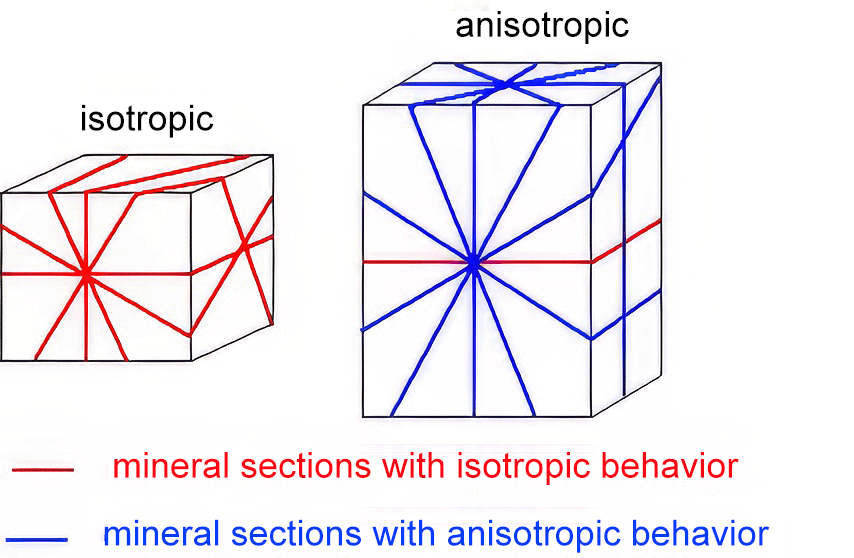
Interference colour. How is it formed?
3 polariser + anisotropic mineral (position perpendicular to the optic axis) + analyser
If it is an anisotropic crystal in one particular position perpendicular to the optic axis, the radiation from the polariser will pass through it without being modified, and when it reaches the analyser, it will not be able to pass through and the mineral will be seen as black. Something similar will occur with an isotropic mineral, but an isotropic mineral will always be black under crossed polars, irrespective of the orientation of the cut of the mineral plate. Similarly, it will constantly be black when the microscope stage is turned.

What happens if the crystal is anisotropic and it has a general cut and it is placed in the position of coincidence?
Index | Introduction | PPL | XPL ortos | Interf colour | Int. c. formed? | Previous | Next